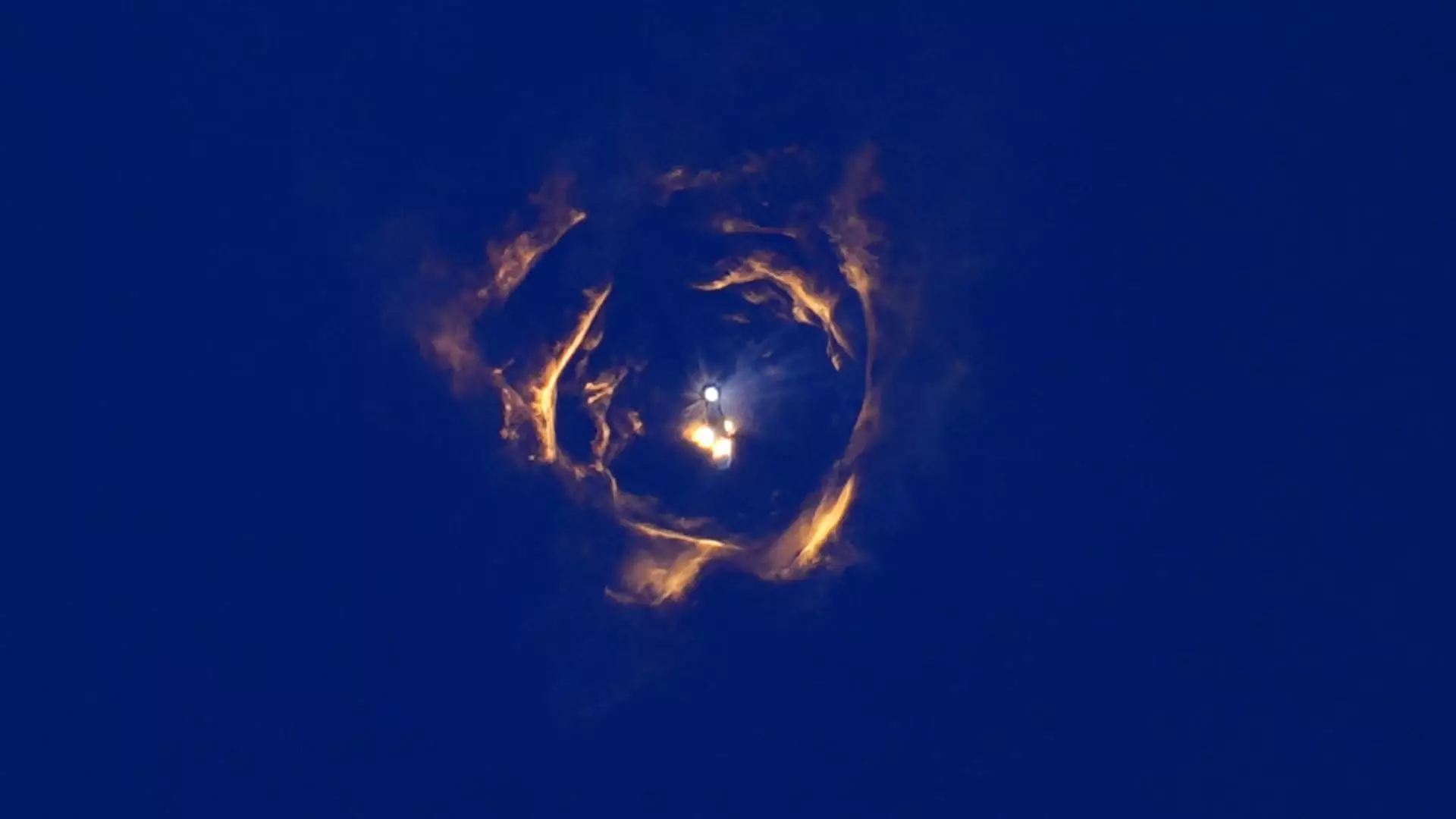On a seemingly routine Thursday afternoon, SpaceX’s Starship rocket faced a significant setback during its seventh flight test, causing a ripple effect throughout the civilian aviation sector. After launching from SpaceX’s facility near Brownsville, Texas, shortly after 5:30 p.m. ET, the rocket experienced a breakup, leading to widespread disruptions in commercial flight operations. The incident highlights the intricate relationship between burgeoning space exploration endeavors and commercial aviation safety protocols.
The aftermath of the Starship incident saw numerous flights either delayed or diverted, impacting dozens of passengers. According to flight-tracking services like Flightradar24, the Federal Aviation Administration (FAA) took immediate action by issuing warnings to pilots, identifying a “dangerous area for falling debris of rocket Starship.” As a precautionary measure, the FAA temporarily throttled traffic around the vicinity of the falling debris, showcasing its commitment to maintaining safety in the air, even amidst ambitious technological advancements on the ground.
Data revealed that one JetBlue Airways flight from Fort Lauderdale to San Juan, Puerto Rico, had to reverse course nearly two hours into its journey due to the hazard posed by falling debris. Similarly, a FedEx cargo flight near the Turks and Caicos Islands and Spirit Airlines flights also altered their paths, demonstrating how far-reaching the implications of a single incident can be in a tightly packed airspace like that over Florida. Notably, American Airlines reported under ten diversions due to the incident, yet the cumulative effect on the travel experience was significant.
The intersection of commercial space launches and aviation introduces unique challenges. As companies like SpaceX push the boundaries of space travel, ensuring the safety of grounded aircraft becomes critical. The FAA, though reporting no injuries or damage from the Starship’s debris, illustrates the delicate balancing act regulated authorities must perform. The rapid escalation of private aerospace operations necessitates a reevaluation of existing air traffic protocols to enhance safety and operational efficiency.
Furthermore, the increased frequency of space flights will likely lead to more instances where commercial aviation must adapt to avoid potential hazards. This incident serves as a reminder that with innovation comes responsibility. Stakeholders in both sectors must collaborate to develop strategic safety measures to prevent future disruptions.
While the SpaceX Starship trial showcased the possibilities of space exploration, it also underscored the complexities involved when such endeavors intersect with commercial aviation. The incident prompted immediate responses from the FAA and various airlines, reflecting the emphasis on passenger safety even as the aerospace landscape evolves. As we continue to witness advancements in space technology, maintaining an equilibrium between innovation and safety must remain at the forefront of conversations among industry leaders. The future holds promise, but it will depend on proactive measures that prioritize the well-being of all individuals in the airspace.


Leave a Reply